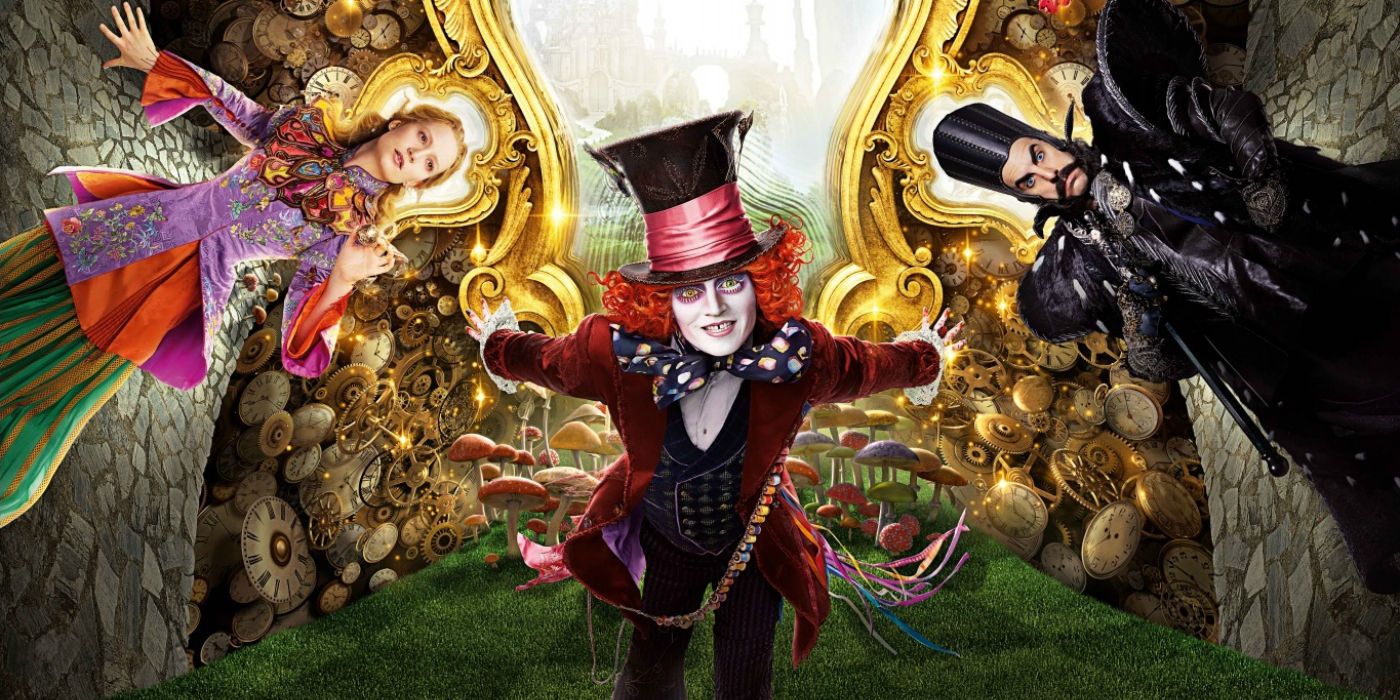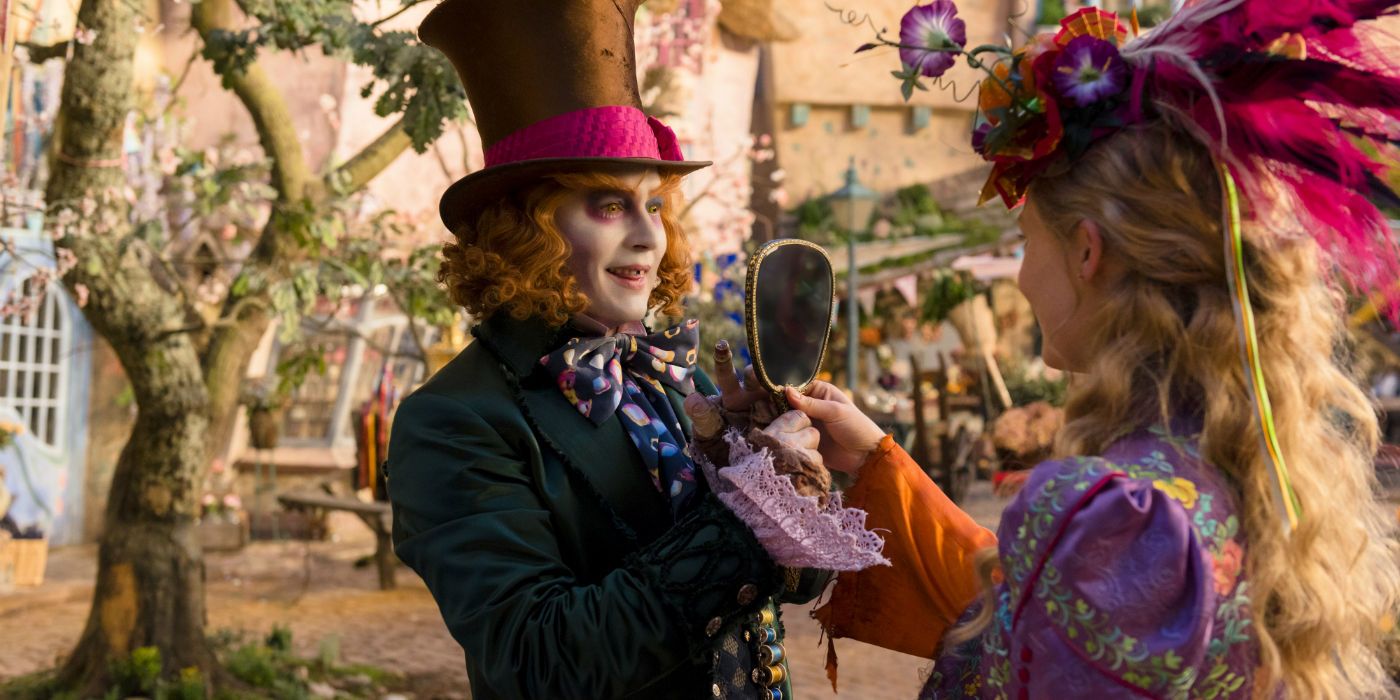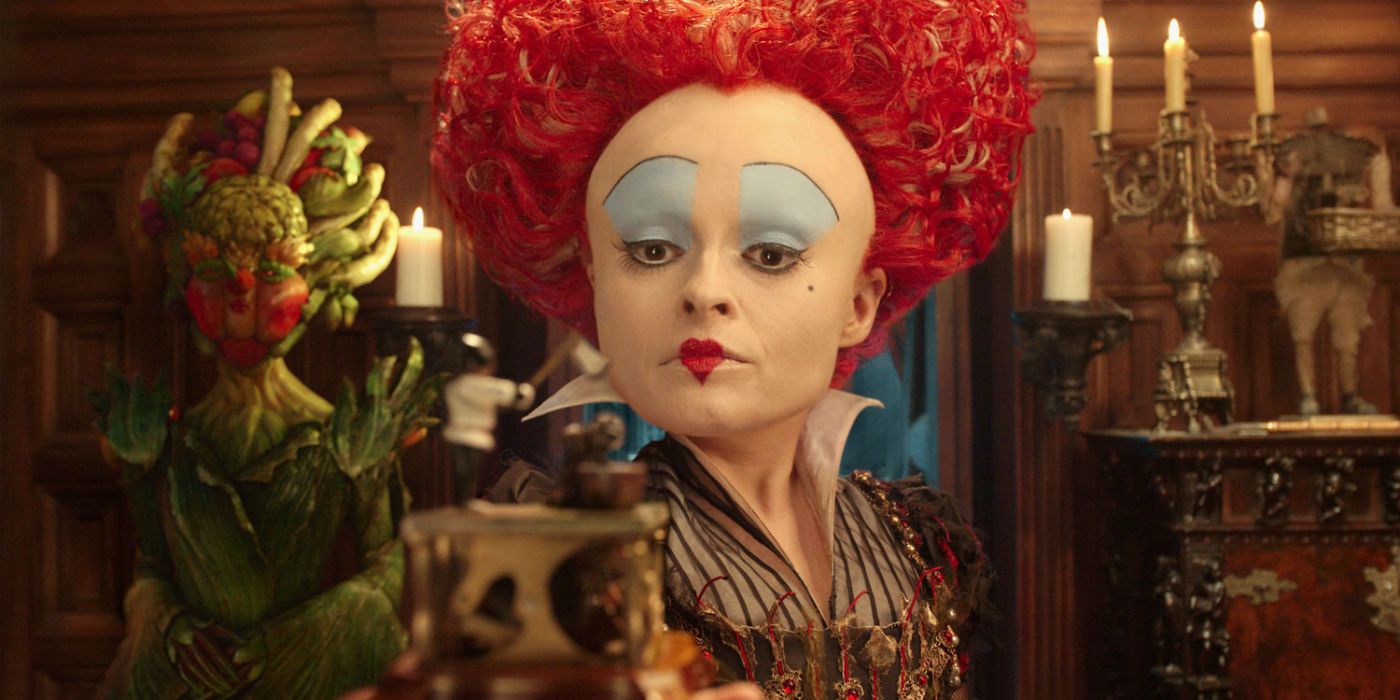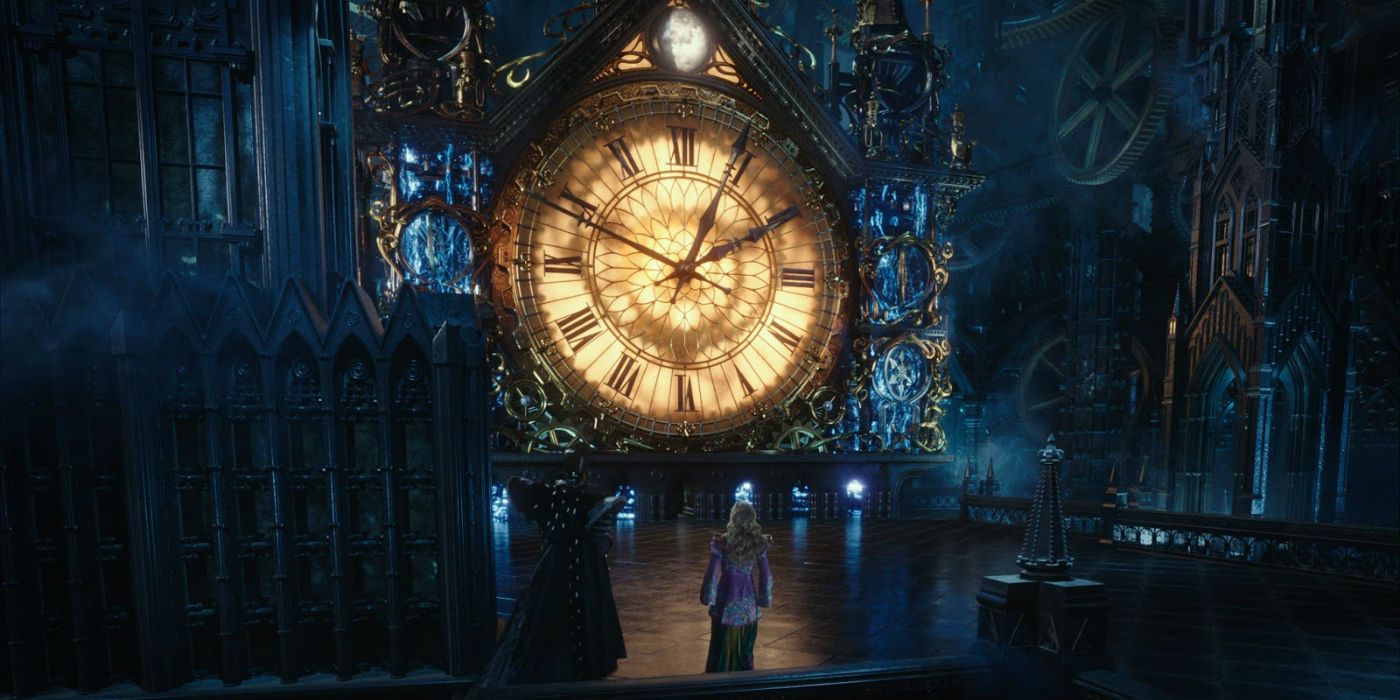Alice Through the Looking Glass is more of a shiny, yet hollow, Disney product than meaningful continuation of Alice's story.
Alice Through the Looking Glass picks up three years after Alice Kinsleigh (Mia Wasikowska) made her second trip to Wonderland, during which time she has traveled to China aboard her late father's trading ship - and made plans to explore the rest of the world, too. Upon returning home to London, Alice discovers that circumstances have changed with regard to both her employment and her mother Helen's (Lindsay Duncan) living situation - putting Alice at risk of both losing her ship and winding up stuck behind a desk, working as a clerk for Hamish Ascot (Leo Bill), the man who once proposed to her. However, before she can make any decision on the matter, Alice is contacted by the caterpillar-turned butterfly Absolem (Alan Rickman) and follows him through an enchanted mirror that leads to Wonderland.
There, Alice learns that Hatter (Johnny Depp) has become convinced that his family - who were seemingly killed by the Jabberwocky years ago - is still alive and that Hatter is now rapidly aging, as a result of this "madness". The White Queen (Anne Hathaway) and the other denizens of Wonderland thus convince Alice to take on a dangerous mission in order to save the Hatter: reach out to Time himself (Sacha Baron Cohen) and use his Chronosphere (a device that allows its user to travel across the Oceans of Time) to go into the past and change Wonderland's history, saving Hatter's family from their grisly fate. That is, of course, assuming that Alice doesn't break the timeline in the process...
Alice Though the Looking Glass is arriving on the scene some six years after director Tim Burton's Alice in Wonderland opened in theaters in 2010, on its way to grossing over $1 billion worldwide and ushering in the new era of Disney live-action fairy tale re-imaginings. While the majority of the Alice in Wonderland cast returned for the sequel, Burton only produced Alice Through the Looking Glass - having instead passed the director's torch over to Disney's Muppets helmsman James Bobin. Unfortunately, similar to the Bobin-directed Muppets sequel Muppets Most Wanted, the Alice in Wonderland followup comes across as an attempt to keep a lucrative Disney brand going, more than anything else.
The Alice Through the Looking Glass narrative by Linda Woolverton, who also penned Burton's Alice in Wonderland, picks up with Alice as a young adult woman - and her character arc in the film (as Alice comes to learn that she cannot simply "cheat" her way out of her adult problems in the present) is a worthwhile extension of Alice's own coming of age journey in the previous Alice installment. Unfortunately, despite another solid performance from Mia Wasikowska, Alice spends most of Through the Looking Glass serving as little more than observer to the (scenery-chewing) antics of Wonderland's various eccentric citizens - in particular, the Mad Hatter and the Red Queen, whose origins are revealed over the course of a larger storyline that is serviceable, but formulaic and banks too much on over-used time-travel narrative tropes.
Johnny Depp's Hatter is afforded a backstory here that involves a difficult relationship with his father Zanik Hightopp (Rhys Ifans), but that Through the Looking Glass plot thread is derivative of Depp's previous collaborations with Burton and the "daddy issues" explored therein. As for the Hatter himself, there's less emotional nuance to the character here than there was in Alice in Wonderland - to the degree that Depp's Hatter in general comes off as little more than a live-action, but still two-dimensional, cartoon character. Helena Bonham Carter's Red Queen, by comparison, gets a more intriguing backstory that paints her in a more sympathetic light (bringing to mind Woolverton's revisionist approach to another Disney villain in her Maleficent screenplay). However, these emotional insights end up feeling superficial since Carter's Red Queen is still the same flat antagonist for most of the film - and her relationship with Anne Hathaway's White Queen is under-developed, enough so that the revelations about the sisters' shared past have limited dramatic impact.
Sacha Baron Cohen's Time is another important player in Alice Through the Looking Glass' proceedings - and while the bumbling antagonist is more multi-faceted than the literal mustache-twirling villain he could have been, he functions as an obstacle in the movie's narrative, more than an interesting character in his own right. Meanwhile, Wonderland's CGI residents (the late Alan Rickman's Absolem, Michael Sheen's White Rabbit, Stephen Fry's Cheshire Cat, and so forth) are more set decorations than characters here, even more than they were in Alice in Wonderland. The disconnect between the humans and Through the Looking Glass' digitally-rendered players (and, to a lesser degree, the CGI environments) is all the more apparent here too, following on the heels of Jon Favreau's The Jungle Book: a Disney live-action fairy tale movie that's more successful at integrating its digital elements (including the film's CGI supporting characters) with its lead actor(s).
Wonderland itself is a more pleasantly colored fantasy landscape (with a more even mix of practical sets and digital backdrops) in Through the Looking Glass than it was in Alice in Wonderland. Likewise, Bobin and his collaborators - including director of photography Stuart Dryburgh (The Secret Life of Walter Mitty) - succeed in creating some captivating imagery and spectacle here too, with new locations such as Time's lair and the (literal) Oceans of Time. However, though Through the Looking Glass' brighter color palette allows the movie's visuals to appear less murky when viewed in 3D than Alice in Wonderland's did, the various settings and scenery in Burton's first installment had more personality by comparison (thanks to the filmmaker's darkly off-beat touch). Bobin's Alice sequel also uses 3D more to create an immersive atmosphere than for pop-out effect, though not in a particularly innovative way - so although Through the Looking Glass benefits from being viewed on a big screen, 3D is not really a necessity to get the full viewing experience offered here.
While there are elements of the film that (with additional development) could have potentially elevated it above being an acceptable, but forgettable, sequel, Alice Through the Looking Glass is more of a shiny, yet hollow, Disney product than meaningful continuation of Alice's story. Through the Looking Glass entered development before the critically-acclaimed Disney live-action fairy tale films Cinderella and The Jungle Book and it shows, as the Alice in Wonderland followup has a mindset more in line with the corporate-mandated franchise fare that Disney was producing in the early 2010s (see Prince of Persia, Pirates of the Caribbean: On Stranger Tides, etc.) than its more creatively-inspired recent tentpoles. Through the Looking Glass unfolds more as a book-end to Alice in Wonderland than a bridge to a third Alice movie, but time itself - not Time himself - and the box office will truly determine whether or not Miss Kingsleigh gets to head back to Wonderland again in the future.
TRAILER
Alice Through the Looking Glass is now playing in U.S. theaters nationwide. It is 113 minutes long and is Rated PG for fantasy action/peril and some language.
Let us know what you thought of the film in the comments section.




